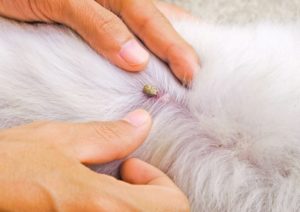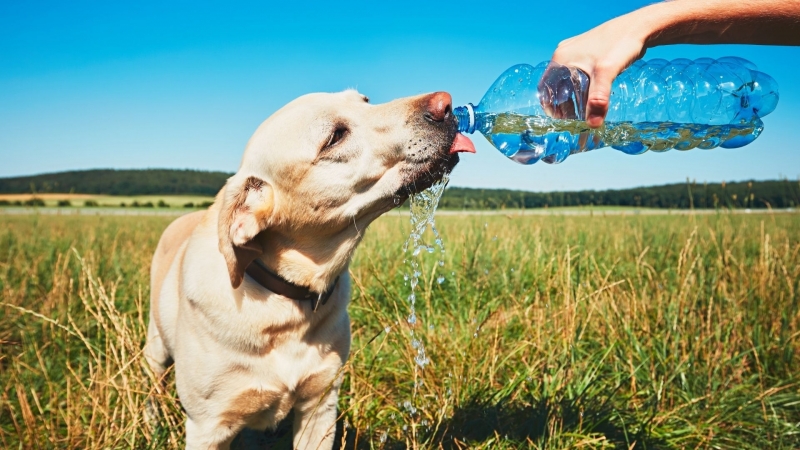Summer is a time for fun in the sun, but it can also bring about some common problems for our dogs friends. As dogs owners, it’s important to be aware of these potential issues and know how to prevent or address them. In this article, we will discuss the most common problems in dogs during the summer and provide tips on how to keep your canine companion safe and healthy.
Heatstroke: A Serious Threat to Dogs in the Summer

One of the most common problems that dogs face during the summer is heatstroke. Dogs are not able to regulate their body temperature as efficiently as humans, making them more susceptible to overheating. This is especially true for breeds with thick coats or short snouts, such as bulldogs and pugs.
Signs and Symptoms of Heatstroke in Dogs
Heatstroke occurs when a dog’s body temperature rises above 104°F (40°C). Some common signs and symptoms of heatstroke in dogs include excessive panting, drooling, vomiting, diarrhea, weakness, and collapse. If left untreated, it can lead to organ failure and even death.
How to Prevent Heatstroke in Dogs
To prevent heatstroke in dogs, it’s important to never leave your dog in a hot car, even for a few minutes. The temperature inside a car can rise quickly, even with the windows cracked. When taking your dog for a walk or hike, avoid going out during the hottest part of the day and make sure to bring plenty of water for both you and your dog. You can also provide your dog with a cool and shady spot to rest in, and consider using a cooling vest or mat to help regulate their body temperature.
Parasites: An Unwelcome Guest in the Summer Months

Parasites are another common problem that dogs face during the summer months. Fleas, ticks, and mosquitoes are more prevalent during this time of year, and they can cause a range of health issues for our furry friends.
Fleas and Ticks: A Nuisance for Dogs
Fleas and ticks are not only a nuisance for dogs, but they can also transmit diseases such as Lyme disease and Rocky Mountain spotted fever. These parasites thrive in warm and humid environments, making the summer months the perfect breeding ground for them.
How to Protect Your Dog from Fleas and Ticks
To protect your dog from fleas and ticks, make sure to use a flea and tick preventative recommended by your veterinarian. You should also regularly check your dog for any signs of these parasites, especially after spending time outdoors. If you find a tick on your dog, make sure to remove it properly with tweezers and monitor your dog for any symptoms of tick-borne illnesses.
Allergies: A Common Problem for Dogs in the Summer
Just like humans, dogs can also suffer from allergies, and the summer months can exacerbate these issues. Pollen, grass, and other environmental allergens can cause skin irritation, itching, and discomfort for our furry friends.
Signs and Symptoms of Allergies in Dogs
Some common signs and symptoms of allergies in dogs include excessive scratching, red and inflamed skin, hair loss, and ear infections. If your dog is showing any of these symptoms, it’s important to consult with your veterinarian to determine the cause and proper treatment.
How to Manage Allergies in Dogs
To manage allergies in dogs, it’s important to identify the allergen and try to limit your dog’s exposure to it. Regularly bathing your dog with a hypoallergenic shampoo can also help alleviate symptoms. In some cases, your veterinarian may prescribe medication or recommend allergy shots to help manage your dog’s allergies.
Dehydration: A Serious Concern for Dogs in the Summer Heat
Dehydration is a common problem that dogs face during the summer months. Just like humans, dogs need to stay hydrated to maintain their overall health and well-being.
Signs and Symptoms of Dehydration in Dogs
Some common signs and symptoms of dehydration in dogs include dry gums, sunken eyes, lethargy, and loss of skin elasticity. If you suspect your dog is dehydrated, it’s important to seek veterinary care immediately.
How to Keep Your Dog Hydrated

To keep your dog hydrated, make sure to always provide them with access to fresh and clean water. You can also add some ice cubes to their water bowl to help keep it cool. If your dog is not drinking enough water, try adding some low-sodium chicken broth or wet food to their diet to entice them to drink more.
Poisonous Plants: A Hidden Danger for Dogs in the Summer
While plants can add beauty to our gardens, some can be toxic to our furry friends. During the summer months, many plants are in full bloom, making it important to be aware of which ones can be harmful to our dogs.
Common Plants That Are Toxic to Dogs
Some common plants that are toxic to dogs include lilies, azaleas, daffodils, and sago palms. These plants can cause a range of symptoms in dogs, from mild stomach upset to organ failure.
How to Protect Your Dog from Poisonous Plants
To protect your dog from poisonous plants, make sure to research which plants are safe to have around your dog and which ones should be avoided. If you suspect your dog has ingested a toxic plant, seek veterinary care immediately.
Conclusion
Summer is a time for fun and relaxation, but it’s important to keep an eye out for potential problems that can arise for our furry friends. By being aware of these common issues and taking preventative measures, you can ensure that your dog stays safe and healthy during the summer months. Remember to always consult with your veterinarian if you have any concerns about your dog’s health.
